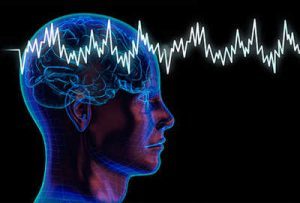- Home
- Editorial
- News
- Practice Guidelines
- Anesthesiology Guidelines
- Cancer Guidelines
- Cardiac Sciences Guidelines
- Critical Care Guidelines
- Dentistry Guidelines
- Dermatology Guidelines
- Diabetes and Endo Guidelines
- Diagnostics Guidelines
- ENT Guidelines
- Featured Practice Guidelines
- Gastroenterology Guidelines
- Geriatrics Guidelines
- Medicine Guidelines
- Nephrology Guidelines
- Neurosciences Guidelines
- Obs and Gynae Guidelines
- Ophthalmology Guidelines
- Orthopaedics Guidelines
- Paediatrics Guidelines
- Psychiatry Guidelines
- Pulmonology Guidelines
- Radiology Guidelines
- Surgery Guidelines
- Urology Guidelines
The combination of two proteins exerts a regenerating effect in Parkinson's disease

Parkinson's disease is currently the second most widespread neurogenerative pathology. It is a motor disorder caused by the loss of dopaminergic neurons in the black substance of the brain. These neurons are the nerve cells that produce dopamine, a neurotransmitter that plays a key role in the modulation of involuntary movements.
The research carried out at the UPV/EHU was developed in an experimental model that allows different stages of Parkinson's disease to be reproduced. The results showed that the changes caused by the condition were not homogeneous in the different parts of the brain affected. "The impairment is correlated with the specific anatomic distribution of the dopaminergic neurons and their terminals," pointed out the researcher Catalina Requejo. In other words, those areas of the black substance in which the dopaminergic neurons have more connections with regions that remain whole were found to be less affected.
After confirming that the experimental model could be used to explore the morphological and functional changes caused by the disease, therapeutic strategies based on the release of neurotrophic factors were applied. These factors are proteins that encourage cell growth, plasticity and survival, and therefore play an essential role in controlling neuronal function.
Specifically, two factors were applied: the Vascular Endothelial Growth Factor (VEGF) and the Glial Cell-derived Neurotrophic Factor (GDNF). These molecules were delivered encapsulated in microspheres or in nanospheres, even smaller than the former, comprising a biocompatible, biodegradable polymer: Poly Lactic-co-glycolic Acid (PLGA), which allows them to be released continuously and gradually. Furthermore, the factors were administered in a combined way to determine whether, together, they induced a synergistic effect.
The results were encouraging in both the early and severe phase of the model. The combining of the VEGF and GDNF not only significantly reduced the degeneration of the dopaminergic neurons of the black substance, it also induced the formation of new cells and cellular differentiation. The researchers were also able to confirm that there had been an improvement in the areas where the nerve fibres in this region were projected. To confirm the synergistic, neurogenerative effect of the two factors, they administered a molecule that inhibits the receptors of the two neurotrophic factors they were studying. "The consequences for the dopaminergic system were even worse, which supports the beneficial synergistic effects exerted by the VEFG and the GDNF in Parkinson's," concluded the researcher.
Finally, it is worth highlighting that the best results were obtained when the factors were delivered encapsulated in nanospheres during the early phase of the disease replicated in the model. All this reinforces the importance of early diagnosis and that "nanotechnology could be a very useful tool when it comes to administering neurotrophic factors," she added.

Disclaimer: This site is primarily intended for healthcare professionals. Any content/information on this website does not replace the advice of medical and/or health professionals and should not be construed as medical/diagnostic advice/endorsement or prescription. Use of this site is subject to our terms of use, privacy policy, advertisement policy. © 2020 Minerva Medical Treatment Pvt Ltd